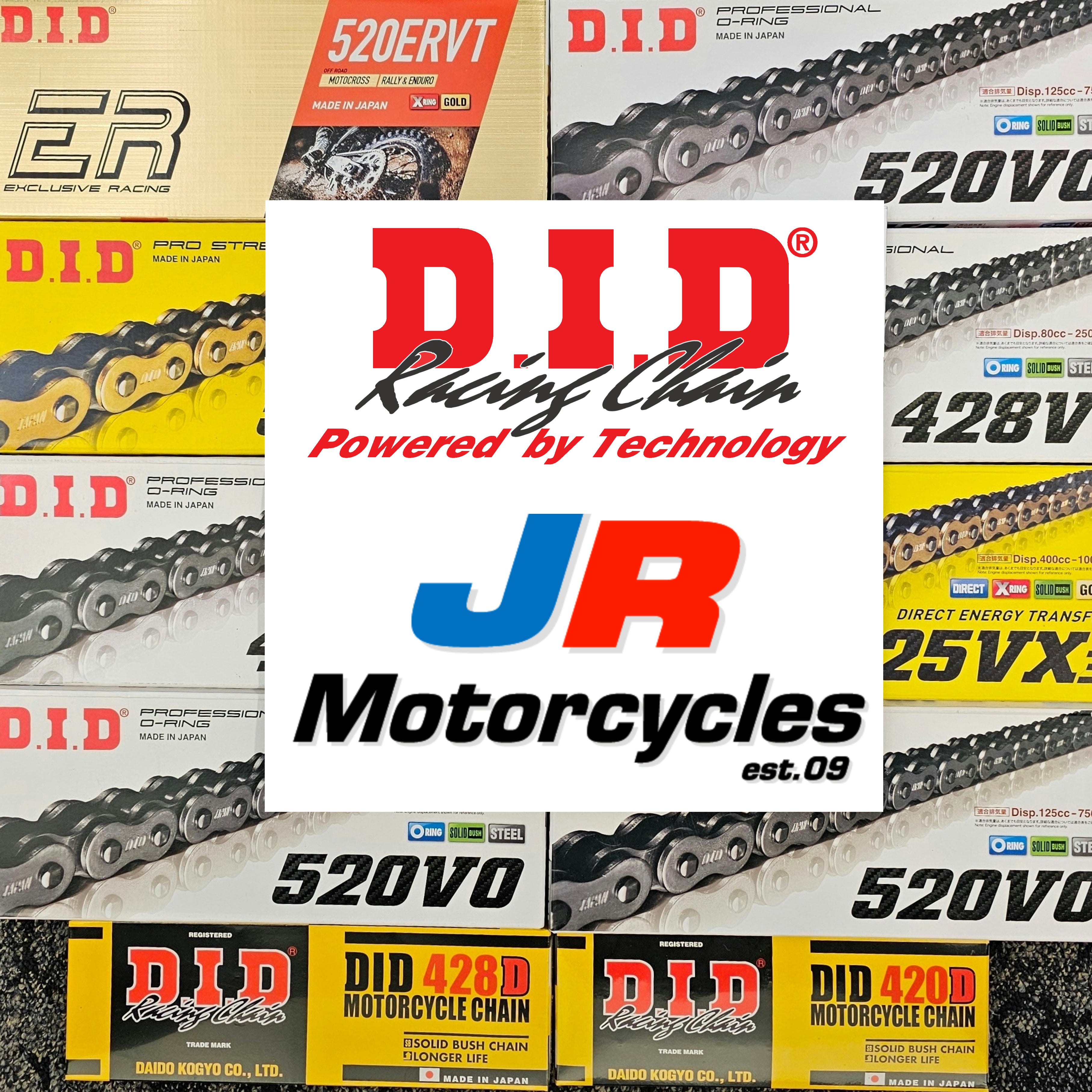Motorcycle chains are the unsung heroes of drivetrain performance. While we often focus on sprockets, lubrication, and tension, there's a tiny yet critical component that literally holds everything together — the chain link. But what exactly are master links, connecting links, and rivet links? And which one should you use? Let's break it down.
1. 🔗 What is a Chain Link?
Every motorcycle chain is made up of inner and outer plates joined by pins and rollers. To close the chain loop around the sprockets, a special link is used — this is where connecting links come into play. These are commonly categorized into three types:
2. 🔧 Master Link (Clip-Type Connecting Link)
The most common on off-road bikes and easy-to-install chains.
-
Design: Comes with a removable clip that slides over two pins on the outer plate.
-
Advantages:
-
Simple and quick to install/remove with basic tools.
-
Ideal for trail riders and DIY mechanics.
-
-
Disadvantages:
-
The clip can potentially come loose under high stress or poor installation.
-
-
Best for: Dirt bikes, temporary chains, or lower-powered motorcycles.
Installation Tip: Always install the clip so the closed end points in the direction of chain travel to reduce the risk of it being knocked off.
3. 🛠️ Rivet Link (Soft Link)
Common in OEM and performance-oriented setups.
-
Design: Uses pins that are riveted over on the end, forming a permanent closure.
-
Advantages:
-
Extremely secure — won’t come off under stress.
-
Recommended for high-performance or high-speed road use.
-
-
Disadvantages:
-
Requires a proper chain riveting tool.
-
Not designed for removal — considered permanent.
-
-
Best for: Street bikes, race bikes, and high-power motorcycles.
Pro Tip: If you're riding a modern sportbike or any motorcycle over 400cc, a rivet link is likely your safest and most durable choice.
4. 🧰 Do You Need a Chain Tool?
Short answer: Yes, if you're using a rivet-style link or cutting a new chain to size.
Here’s when you’ll definitely need a proper chain tool:
-
🔩 Installing a rivet link: You need a tool to press the outer plate onto the pins, and then deform the rivet tips securely.
-
✂️ Sizing a chain: Most new chains are sold longer than needed. A chain breaker tool is required to remove extra links safely.
-
🧑🔧 Professional or high-stress use: If you're working on a track bike or regularly hitting high RPMs, using the right tool ensures a stronger, safer connection.
A good quality chain tool kit usually includes:
-
Chain breaker pin
-
Press plates
-
Rivet flaring tips
-
Handle or ratcheting mechanism
Trying to install a rivet link without a proper tool can lead to a weak joint, chain damage, or premature failure, none of which you want on the open road.
DRC Pro Chain Tool 420-530 - Trusted by JR Motorcycles!
5. 🧩 Other Terms to Know
-
Connecting Link: General term for any link that joins chain ends.
-
Soft Link: A rivet link, named for the way its pin heads are “softened” or flared.
-
Solid vs. Hollow Pins: Hollow pins are easier to flare when riveting, making them more DIY-friendly.
6. 🔍 Quick Reference Table
| Type | Installation | Tools Needed | Strength | Ideal Use |
|---|---|---|---|---|
| Master (Clip) | Easy | Pliers | Moderate | Dirt & trail bikes |
| Rivet | Moderate | Chain tool kit | High | Street, sport & touring bikes |
7. 🏁 Final Thoughts
Chain links might be small, but they play a massive role in keeping you rolling. Whether you’re choosing a chain, doing your own maintenance, or speccing a race bike, knowing the difference between link types and the tools required can make all the difference in both safety and performance.
If you're unsure what link or tool you need, pop into JR Motorcycles or drop us a message. We’ll set you up with exactly what fits your bike and your riding style.
All blog posts and content published by JR Motorcycles are our original work. We kindly ask that you do not copy, reproduce, or redistribute our materials without permission.

